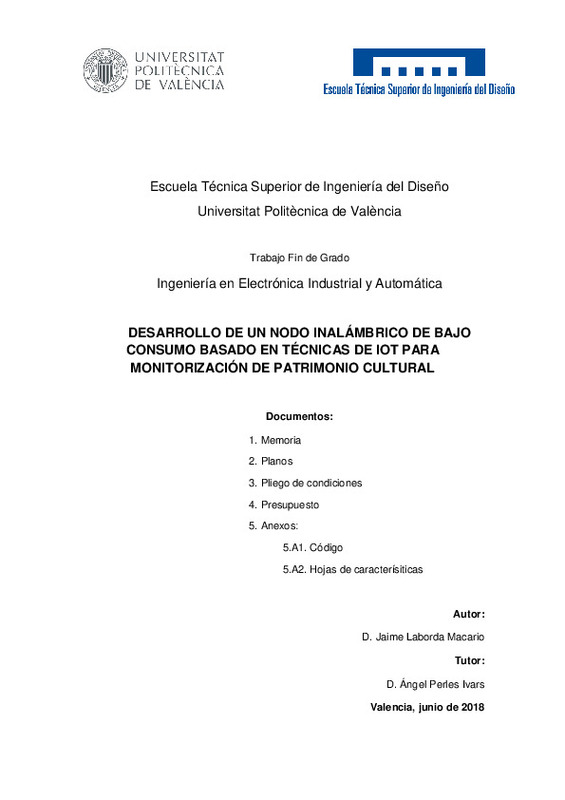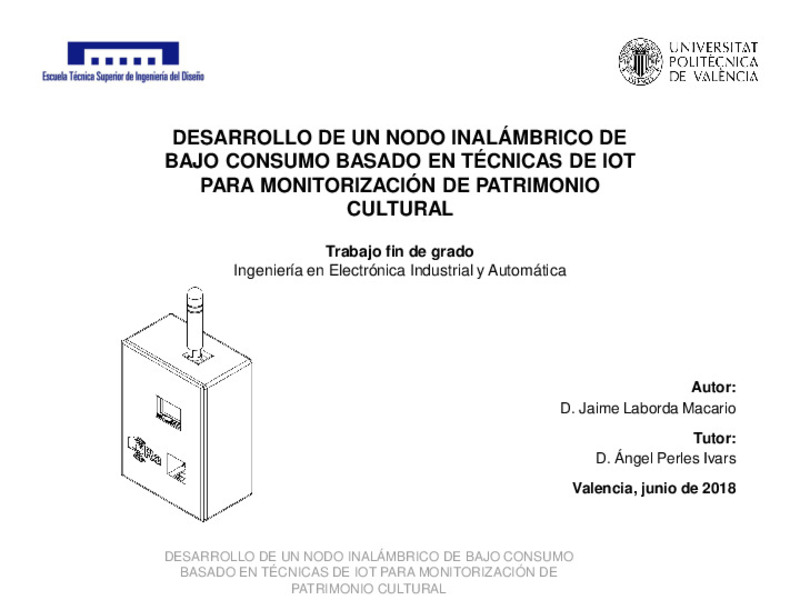JavaScript is disabled for your browser. Some features of this site may not work without it.
Buscar en RiuNet
Listar
Mi cuenta
Estadísticas
Ayuda RiuNet
Admin. UPV
Desarrollo de un nodo inalámbrico de bajo consumo basado en técnicas de IOT para monitorización de patrimonio cultural
Mostrar el registro completo del ítem
Laborda Macario, J. (2018). Desarrollo de un nodo inalámbrico de bajo consumo basado en técnicas de IOT para monitorización de patrimonio cultural. Universitat Politècnica de València. http://hdl.handle.net/10251/108133
Por favor, use este identificador para citar o enlazar este ítem: http://hdl.handle.net/10251/108133
Ficheros en el ítem
Metadatos del ítem
| Título: | Desarrollo de un nodo inalámbrico de bajo consumo basado en técnicas de IOT para monitorización de patrimonio cultural | |||
| Autor: | ||||
| Director(es): | ||||
| Entidad UPV: |
|
|||
| Fecha acto/lectura: |
|
|||
| Resumen: |
[ES] De la misma forma que Internet ha conectado a personas de todo el mundo, el Internet de las cosas está pensado para conectar objetos y máquinas a nuestro alrededor. Todo, desde las luces de la calle, hasta los ...[+]
[EN] Just like the Internet has connected people all around the Word, the Internet of Things is built to connect objects and machines around us. Everything from streets lights to parking meters will communicate to make our ...[+]
|
|||
| Palabras clave: |
|
|||
| Derechos de uso: | Reconocimiento (by) | |||
| Editorial: |
|
|||
| Titulación: |
|
|||
| Tipo: |
|
recommendations
Este ítem aparece en la(s) siguiente(s) colección(ones)
-
ETSID - Trabajos académicos [8906]
Escuela Técnica Superior de Ingeniería del Diseño








